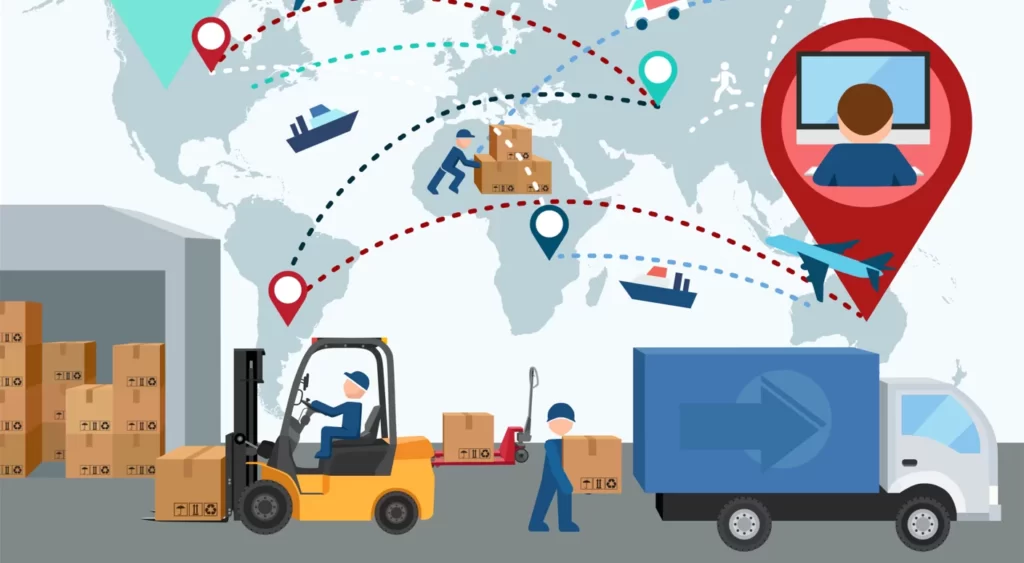Transform Fleet Management with Dynamics 365 Finance and Operations
It is easier for businesses having limited vehicles to manage on their own. However, for medium to large scale businesses, it is recommended to opt for unified Fleet Management Software like the one Microsoft Dynamics 365 Finance and Operations offers. Any business that owns a fleet of vehicles to transport goods from one location to another or from the store to straight at the customer’s doorstep, requires management. In the era of digitally transformed competition, it is mandatory to optimize the latest technology to stay ahead in the race. Even those ventures fall into the category of providing outsourced services for transportation. D365 F&O can resolve fleet management challenges faced by managers such as: Tedious administrative tasks such as invoicing, quoting, dispatching, and keeping customers up to date are time-consuming. Fluctuating fuel costs can add a significant cost to your budget. Unforeseen vehicle breakdowns can cause delivery delays and a downfall in productivity. The inability to reach drivers while they are driving adds another challenge to the list. Inability to maintain driver’s productivity as losing good drivers is an expensive affair. Lack of coordination among fleets scattered in various locations. Scattered data leading to poor decisions is one of the major concerns. How Dynamics 365 Finance and Operations help your Business? Dynamics 365 Finance and Operations delivers unified Fleet Management Software that allows you to manage buses, trucks, delivery vehicles, and a lot more. Instead of directly calling drivers, this solution enables live vehicle tracking, route progress, and even late or missed stops. It allows various robust functions such as: Driver Management D365 Finance and Operations helps manage your driver by automatically recording locations, trips, and driving behavior. Monitoring their activities, driving patterns and vehicle utilization becomes easier. You can easily create and manage a driver’s profile and identify if they have an expired license. You can also access alert emails/SMS for long driving hours. Check if any of them violate the rules. In addition, it also delivers insightful statistical reports on driver management. Trip Scheduling and Route Planning This feature of the single Fleet Management Software allows you to create trip specifying instructions and waypoints. You can schedule trips and predict optimal routes based on traffic. You can get accurate data on turn-by-turn driving directions, estimated driving time, and distance. Besides, it calculates and generates routes for the fastest travel hence saving you fuel. Route planning is automated. You can easily search, plot, assess, and print your route. Vehicle Maintenance With vehicle maintenance, you can create better schedules, and maintenance plans based on industrial rules while tracking vehicles needing sudden attention. In addition, you can track their history based on their type (e.g., four-wheelers, two-wheelers, loading capacities, etc.) You can also track budgeting vs actual maintenance cost. Vehicle Tracking The solution enables real-time vehicle location visibility and tracks historical data on routes, site visits, vehicle speed, idling, and drivers’ behavior. Moreover, you can also claim live traffic updates, excessive speed monitoring, unauthorized vehicle uses tracking, etc. You can also create personalized maps with custom geo-zones as well as landmarks. Track Tyre Efficiency Now you can track tire efficiency through Tyre serial number or Tyre Card No. The Tyre factsheet generated gives out all the transactions and analysis of a Tyre while current running Tyres on the vehicle with actual mileage and life are also tracked. How Dynamics 365 Finance and Operations Favors Your Business? Having all the above-given functionalities eventually works in a business’s favor. With driver management, trip planning, scheduling, and other features, your business is bound to see a difference in productivity. Cuts Fuel Cost With this software, you can manage your fuel costs by identifying every potential aspect that can help you consider every aspect that can save you fuel, be it finding the shortest route, avoiding traffic, or using the vehicle to its full capacity. It can address all the aspects that will help you save costs on fuel. Reduces Vehicle Maintenance cost Since the user can track vehicle history, km traveled, fuel consumption, engine hours, and other factors, you can pre-determine the maintenance requirement and take preventative measures before bigger damage. Improves Driver’s Safety This solution allows you to track your driver’s performance, expertise, background, capabilities, behavior, and other factors before assigning them trips. Make Timely Deliveries You can identify the ideal vehicle for delivering a specific item or a category of items with maximum capacity, followed by customizing routes to the shortest. This way you can boost productivity by delivering more items in a day thus helping you ease up on secondary trip planning. To Sum it Up Having Unified Fleet Management Software like Dynamics 365 Finance and Operations has become a necessity these days. Since logistics usually operate on razor-thin margins, profit depends upon the optimization methodologies you conduct. If you are looking for D365 Finance and Operations implementation, you can Contact Trident Information Systems, a Gold Microsoft Dynamics 365 implementation partner with a massive team of experts and a robots track of accomplishments.
Transform Fleet Management with Dynamics 365 Finance and Operations Read More »





